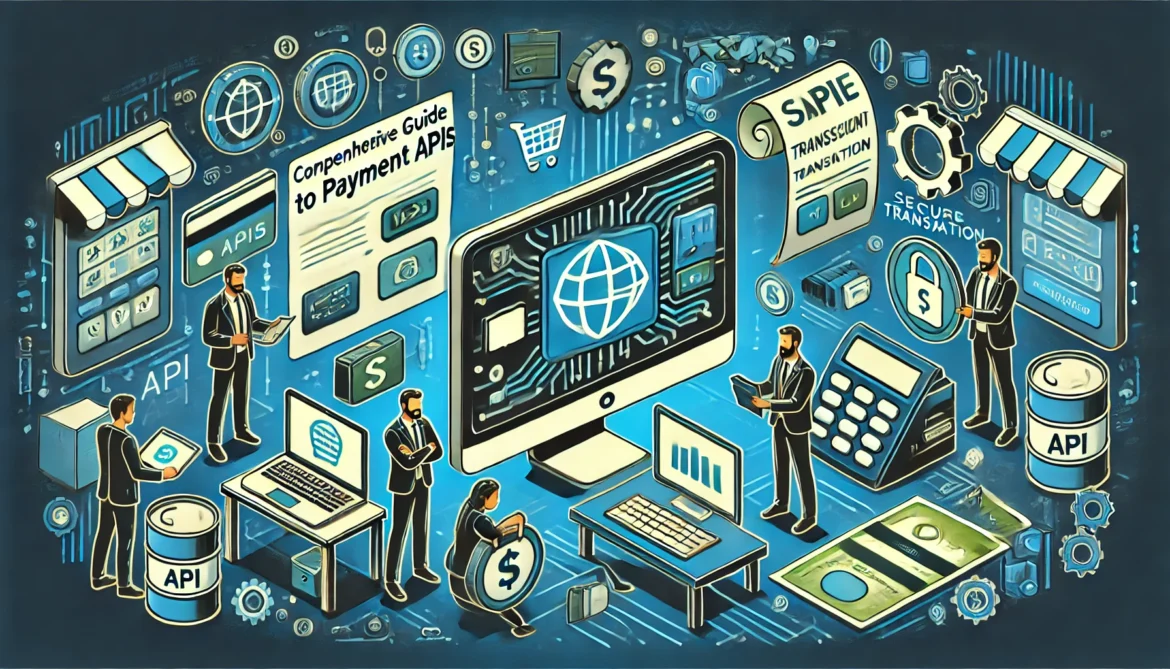Table of Contents
In the evolving landscape of digital commerce, Payment APIs (Application Programming Interfaces) have become an integral component of online transactions. These APIs enable businesses to process payments seamlessly, securely, and efficiently. This article explores the world of Payment APIs, their importance, how they work, and why businesses should consider utilizing professional payment gateway development services to ensure robust and secure payment solutions.
Understanding Payment APIs
Payment APIs allow software applications to communicate with payment processing services. They provide a standardized interface through which businesses can handle transactions, manage payment data, and integrate various payment methods. By leveraging Payment APIs, companies can offer a smooth and user-friendly checkout experience, which is crucial for customer satisfaction and retention.
How Payment APIs Work
The Payment Process Flow
The payment process using a Payment API typically involves the following steps:
- Customer Initiates Payment: The customer selects their preferred payment method and enters their payment details on the merchant’s website or app.
- API Request: The payment information is sent to the Payment API, which then forwards the data to the payment processor.
- Payment Processing: The payment processor validates the transaction details, checks for fraud, and contacts the customer’s bank or card issuer.
- Authorization: The bank or card issuer approves or declines the transaction. This response is sent back through the Payment API.
- Transaction Confirmation: The merchant and customer receive confirmation of the transaction status. If approved, the payment is processed, and funds are transferred.
Key Components of a Payment API
- Endpoints: URLs where API requests are sent.
- Methods: Actions performed by the API, such as POST for creating a transaction or GET for retrieving transaction status.
- Headers: Additional information included in API requests, such as authentication tokens.
- Payload: The body of the request, containing payment details and other relevant data.
Security and Compliance
Importance of Security
Payment APIs handle sensitive financial information, making security a top priority. Implementing robust security measures is essential to protect customer data and prevent fraud.
Key Security Features
- Encryption: Ensures that payment data is transmitted securely.
- Tokenization: Replaces sensitive payment information with unique tokens.
- Fraud Detection: Uses machine learning and analytics to identify and prevent fraudulent transactions.
- Two-Factor Authentication: Adds an extra layer of security by requiring two forms of verification.
Compliance Standards
Payment APIs must comply with industry standards and regulations, such as:
- PCI-DSS (Payment Card Industry Data Security Standard): A set of security standards designed to protect card information.
- PSD2 (Payment Services Directive 2): A regulation in the European Union that enhances security and promotes innovation in payments.
- GDPR (General Data Protection Regulation): Ensures the protection of personal data for EU residents.
Choosing the Right Payment API
Factors to Consider
- Compatibility: Ensure the API is compatible with your existing systems and platforms.
- Security: Look for APIs with robust security features and compliance with industry standards.
- Scalability: Choose an API that can handle your current transaction volume and grow with your business.
- Flexibility: Opt for an API that supports multiple payment methods and currencies.
- Support and Documentation: Good customer support and comprehensive documentation are essential for smooth integration and troubleshooting.
Top Payment API Providers
- Stripe: Known for its ease of use and powerful features, Stripe is a popular choice for businesses of all sizes.
- PayPal: Offers a range of payment solutions and is trusted by millions of users worldwide.
- Square: Provides flexible payment options and is well-suited for small to medium-sized businesses.
- Braintree: A subsidiary of PayPal, Braintree offers advanced payment features and global reach.
- Adyen: A comprehensive payment platform that supports multiple payment methods and currencies.
Implementing Payment APIs
Integration Steps
- Choose the API Provider: Select a provider that meets your business needs and budget.
- Sign Up and Get API Keys: Create an account with the provider and obtain the necessary API keys for authentication.
- Read the Documentation: Familiarize yourself with the API’s documentation to understand its features and capabilities.
- Set Up a Test Environment: Use the provider’s sandbox environment to test the API integration without affecting real transactions.
- Implement the API: Write the code to integrate the API into your website or app. This typically involves setting up endpoints, handling requests and responses, and ensuring security measures are in place.
- Test Thoroughly: Conduct extensive testing to ensure the API works as expected and handles edge cases and errors gracefully.
- Go Live: Once testing is complete and you’re confident in the integration, switch to the live environment and start processing real transactions.
Common Challenges and Solutions
- Integration Complexity: Payment APIs can be complex to integrate, especially for businesses without in-house technical expertise. Consider working with professional developers or engaging payment gateway development services.
- Security Concerns: Ensuring the security of payment data is critical. Implement strong encryption, tokenization, and fraud detection measures.
- Compliance Requirements: Navigating regulatory requirements can be challenging. Choose API providers that comply with relevant standards and offer guidance on maintaining compliance.
Best Practices for Payment API Integration
Optimize for User Experience
- Seamless Checkout: Minimize the steps required to complete a transaction.
- Responsive Design: Ensure the payment process is optimized for all devices, including mobile.
- Clear Communication: Provide clear instructions and feedback during the payment process to enhance user confidence.
Ensure Robust Security
- Regular Updates: Keep your API integration and security measures up to date.
- Monitor Transactions: Continuously monitor transactions for suspicious activity and respond promptly to potential threats.
- Educate Customers: Inform customers about security features and encourage practices like using strong passwords and enabling two-factor authentication.
Maintain Compliance
- Stay Informed: Keep abreast of changes in industry regulations and standards.
- Perform Audits: Regularly audit your payment processes and systems to ensure ongoing compliance.
- Documentation: Maintain thorough documentation of your compliance efforts and security measures.
Conclusion
Payment APIs are essential for modern businesses, enabling seamless, secure, and efficient transaction processing. By leveraging professional payment gateway development services and adhering to best practices, businesses can ensure their payment systems are robust, scalable, and compliant with industry standards. As the digital landscape continues to evolve, staying informed about the latest trends and advancements in payment technology will be crucial for maintaining a competitive edge and delivering exceptional customer experiences. With the right approach and tools, businesses can harness the power of Payment APIs to drive growth and success in the digital economy.









